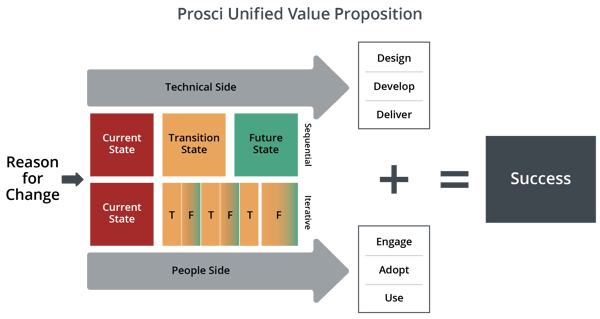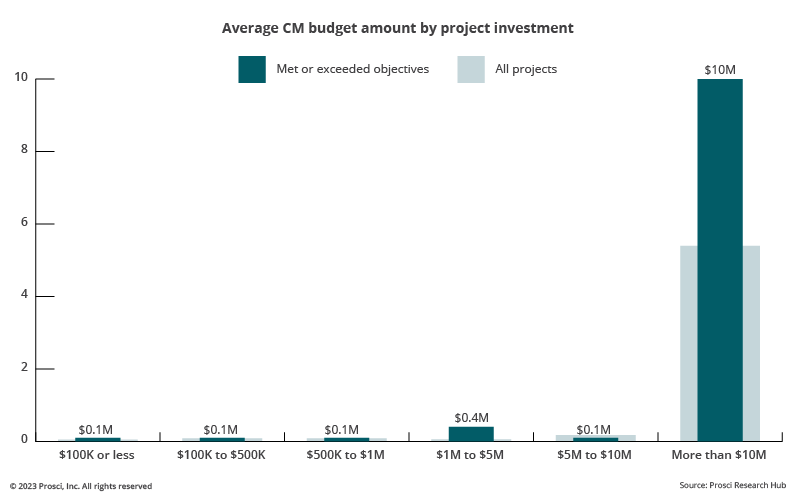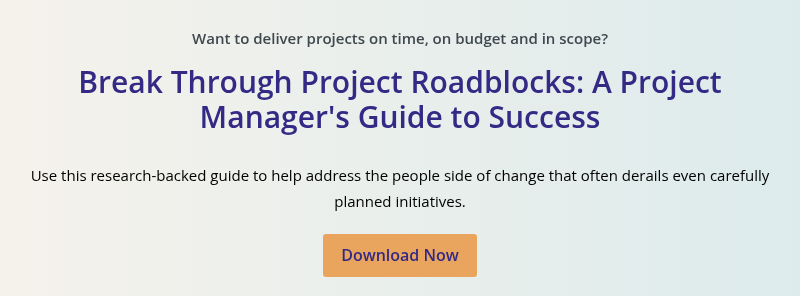5 Tips for Adapting Change Management to Agile CRM Projects

5 Mins
Updated: October 22, 2025
Published: November 1, 2023

How should you adapt change management for an Agile or other iterative project approach? Your journey may begin with a single important project, like a customer relationship management (CRM) system implementation. Under normal circumstances, it’s better to practice deploying new approaches with a lower-risk project, but you may not have a choice when your organization needs you. Whether you have time to plan or need to adapt quickly, these tips may help.
Building Flexibility Into Your Iterative
Change Management Approach
With CRM systems implementations, change management wants to be involved early in each Agile sprint, so we can align Ability with each release. Even if you can’t be involved as early as you would like, you need to find ways to embrace a flexible mindset and adapt your change management approach.
Aligning ADKAR With Iterative Cycles
 Prosci research shows that Agile or iterative development often requires adaptations to change management. To be effective, the change management process must also become iterative. Traditional change management plans become living documents with just-in-time activities, more upfront work, and faster completion times. So, what does that look like when implementing a change management for a CRM system change?
Prosci research shows that Agile or iterative development often requires adaptations to change management. To be effective, the change management process must also become iterative. Traditional change management plans become living documents with just-in-time activities, more upfront work, and faster completion times. So, what does that look like when implementing a change management for a CRM system change?
Here are five tips for incorporating these concepts into your Agile change management approach:
1. Build leadership support for change management
For any project to succeed, it is essential to build credibility with executive leadership. Start by having conversations about why change management is necessary for the project, why it needs to be integrated with the iterative project approach, and what is needed from the leadership team to drive successful adoption on the project.
You may need to have several conversations before leaders fully appreciate the value of change management, but sharing what change management delivers will help you build the credibility and support you need to build momentum with the project team, as well as employees and clients who will use the CRM solution.
Avoid talking about tasks like assessments, surveys and plans. Instead, talk about how change management enables the organization to prepare impacted users to adopt and use the CRM platform, prevents resistance, and drives greater ROI. This clearly demonstrates the value of change management while helping leaders move through their barriers to being good sponsors.
2. Integrate change management with the project work team
Integrating change management with an Agile approach will require more flexibility from you than with Waterfall, but you still need to align if you want to achieve the common goal of a successful CRM systems implementation. And that alignment must occur with the entire project work team—including solutions architects and developers, product owners, and project managers.

Integrating with an iterative project approach (and accommodating the need for speed) may not look precisely like the scenario you planned for or want, and that’s okay. Being flexible often means you need to compromise to collaborate better with IT and product teams, and establish change management as a valuable partner in the project. What matters most is that you make an effort to ensure your seat at every table, even if it is only to observe, get feedback, and hear about where the resistance may come from.
The key activity to do is an impact assessment with the product owner to create your change management strategy for the next Agile release. Ideally it should happen quickly after scope lock occurs, or well in advance, depending on the magnitude of the change. Getting the project team to include change management will give you ample time to build communications, just-in-time training, and in-tool help tips. An impact assessment is also extremely helpful in mitigating resistance with the project work team because it clearly demonstrates change management’s value.
3.Build and equip the right change management team
What resources do you need to lead change effectively on your unique organization’s CRM project? Prosci’s benchmarking research offers detailed data you can use to substantiate your request for resources. You can find the average budget and number of resources organizations like yours used, and then tie it to the level of success they achieved.
If you look at the Best Practices in Change Management research, organizations with 5,000-9,999 employees that met or exceeded their project objectives spent an average of $5.4M for change management on projects valued at greater than $10M. Those who only partially met or failed to meet objectives spent far less on change management—an average of $597,000 for projects valued at $10M or more.

In addition to certified change practitioners, having a dedicated instructional designer, communications specialist, and other specialized roles on your team attending regular meetings helps you understand and act on changes early. You’ll also be able to share timely updates with leaders and people managers before each release
If your CRM system change impacts people in multiple locations or globally, a change agent network will extend your change management effort and make the most of your resources. Work with your leadership to identify influential people in key areas to serve as change ambassadors or change champions who can bridge the gap between your organization-wide strategy and local actions.
The goal is to have the change management team do the bulk of the work and share updates with the change agent network, who then communicate with and support local users with each release. Give these people the training and tools they need to do their jobs, including direct access to product owners and support teams.
4. Incorporate just-in-time functional training
To truly transition away from Waterfall approaches, you must accept that traditional approaches for user-training on the technology probably won’t work for an Agile project with frequent releases and short sprints.
To get in front of changes, your instructional designer or training lead should work closely with product owners to understand feature releases as they’re being developed and not after. This will extend your lead time long enough to create the appropriate training materials for your unique circumstances.
Video-on-demand is an important tool during iterative changes because users need to get up to speed quickly. In the age of TikTok, Reels and Instagram, short videos are easy to make and more digestible to users.
Creating flexible templates, such as digital job aids and infographics, enable you to quickly customize functional training for each sprint. Digital materials are easy to disseminate via collaboration platforms and intranet sites.
Note that you want to avoid sending job aids around via email. With Agile sprints, the job aids get updated often, and email keeps old versions floating around. You want users to get used to going to the intranet to find the most current information. Propagate use of the intranet site by putting a link directly in the CRM tool and chat rooms, such as Microsoft Teams or Webex Spaces.
Digital adoption software, banners, and on-screen links to internal training materials also enable you to deliver in-tool announcements that appear onscreen when people log on to the CRM platform following a release.

4. Anticipate, prevent and mitigate resistance behaviors
Many organizations are experiencing high levels of change and change fatigue, which increases resistance to complex changes like a CRM implementation. To help people move through their barriers to adoption during a fast-moving Agile project, you may need to concentrate on the essentials:
- Prepare people managers for discussions with their teams about the changes coming, as well as the reasons for changing. They must be clear that a CRM system implementation is a critical transformation for your organization.
- Build Desire for the new CRM platform with your end users (usually people on the front lines of your organization) by focusing on the tool’s benefits. What’s their “What’s in it for me?” Does it make their jobs easier? Eliminate frustrating rework? Free up time for special projects and opportunities to advance?
- Put the user at the center of the project design and gather their feedback. Ask them to weigh in on new features, show them how they make a difference to the project, and give them credit for successes. This builds their support for the project and helps them transition through their ADKAR barriers.
- Leverage the change agent network as they can provide the peer-to-peer perspective to mitigate resistance. You will find they always have the most insightful resistance data and storytelling to share, so you can diagnose and resolve resistance early.
Flexible, Agile Change Management for
CRM System Projects
In the change management community today, we often hear about project teams bypassing change management on Agile or iterative projects because they think it will slow them down. But that doesn’t have to be your reality. If you are determined to be flexible and support your project team’s need for urgency, you can implement an iterative change management approach that drives successful adoption of a critical CRM tool across the enterprise. And in the process, you will demonstrate the significant value change management brings to your organization.




